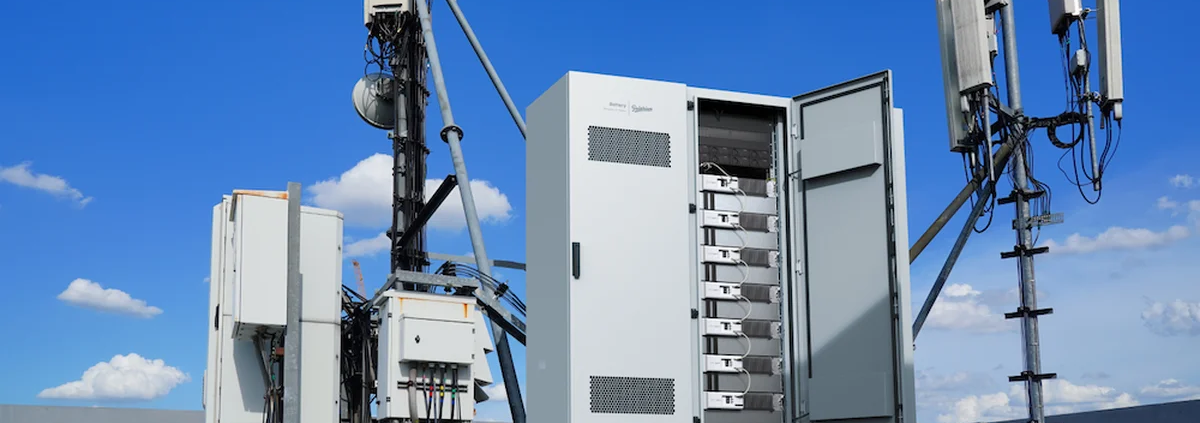12V Telecom Battery vs 48V Telecom Battery: What’s the Difference and Which One Fits Your Network?
As telecom infrastructure rapidly evolves to meet growing data demands and 5G rollouts, backup power systems have become more critical than ever. Among the most fundamental decisions in designing or upgrading a telecom power system is choosing between a 12V telecom battery and a 48V telecom battery.
While both battery types serve the purpose of maintaining uninterrupted communication, they differ significantly in design architecture, energy efficiency, system scalability, and real-world applications. In this article, we break down the key differences and guide you toward the right choice for your network.
🔋 1. Voltage Architecture: Foundation of Your Power System
At the core, the distinction between 12V and 48V telecom batteries lies in their nominal voltage and system configuration.
| Feature | 12V Telecom Battery | 48V Telecom Battery |
| Nominal Voltage | 12V per unit | 48V per string |
| System Setup | Requires multiple batteries in series | Direct 48V supply for most telecom loads |
| Modular Use | Often used in small or legacy systems | Common in modern standardized telecom systems |
➡️ Key Insight:
48V is the global standard for telecom equipment power supply. A 48V battery system often requires fewer components and provides simpler integration, while 12V systems may be preferable for small-scale or distributed sites.
⚡ 2. Efficiency and Power Loss: The Case for 48V
In any DC power system, energy efficiency is critical, especially across long cables or in high-load environments. Power loss (P = I²R) is directly proportional to current. For the same power output, a 48V system draws less current than a 12V one.
| Metric | 12V System | 48V System |
| Current required (for same power) | High | Low |
| Cable thickness needed | Thicker | Thinner |
| Transmission loss | Higher | Lower |
| Heat generation | More | Less |
➡️ Why It Matters:
In large-scale or high-traffic sites (like 5G macro base stations or data rooms), minimizing I²R losses significantly improves operational efficiency and reduces infrastructure costs.
🏗️ 3. Applications and Scalability
Both 12V and 48V telecom batteries can be deployed across telecom networks, but their typical applications differ based on size, location, and power demand.
| Use Case | 12V Telecom Battery | 48V Telecom Battery |
| Small base stations | ✅ Ideal | Possible but less common |
| Edge devices / Remote cabinets | ✅ | ❌ Not cost-efficient |
| Macro base stations | ❌ Too many units needed | ✅ Standard use |
| Data centers / Network core | ❌ | ✅ Optimized design |
| Hybrid solar telecom sites | ✅ In low-power setups | ✅ In high-power setups |
➡️ Scalability Factor:
48V systems scale more easily, are compatible with industry rectifiers, and are often better suited for centralized energy storage. 12V batteries can be used in parallel, but scaling adds complexity and redundancy challenges.
🛠️ 4. Installation, Maintenance, and Smart Management
Modern telecom networks demand remote monitoring, predictive maintenance, and seamless integration with network management systems.
| Feature | 12V System | 48V System |
| Space efficiency | Lower | Higher |
| Battery management (BMS) | Often basic or unavailable | Advanced BMS with CAN/RS485 |
| Intelligent monitoring | Limited | Standard in modern 48V solutions |
| System-level integration | Manual or local | Cloud-ready, remote diagnostics |
➡️ In Practice:
48V lithium telecom batteries often come with built-in smart BMS, enabling voltage balancing, temperature control, and fault reporting—essential for large, unattended sites.
💰 5. Cost Considerations: CapEx vs OpEx
| Cost Type | 12V Battery System | 48V Battery System |
| Initial purchase cost | Lower | Higher |
| Cabling and infrastructure | Higher | Lower |
| Maintenance cost over time | Higher | Lower |
| Energy efficiency (lifecycle) | Lower | Higher |
➡️ Bottom Line:
While a 12V telecom battery may seem cost-effective initially, the long-term operational expenses, space requirements, and inefficiencies often make 48V systems more economical in high-demand or scalable telecom applications.
✅ Summary: Which One Should You Choose?
| Scenario | Best Battery Type |
| Rural, remote micro base stations | 12V Telecom Battery |
| Urban 4G/5G macro towers | 48V Telecom Battery |
| Small edge device cabinets | 12V Telecom Battery |
| Data center backup or hybrid solar sites | 48V Telecom Battery |
📝 Conclusion
Choosing between a 12V telecom battery and a 48V telecom battery is not just a matter of voltage—it’s a decision that impacts the efficiency, reliability, and scalability of your network power architecture. As telecom infrastructure modernizes, 48V lithium battery systems are becoming the default for their superior energy efficiency, intelligent monitoring, and compatibility with modern telecom equipment.
However, 12V systems still play a vital role in smaller deployments, remote edge nodes, and legacy upgrades where cost, size, or compatibility demands it.
📚 Recommended Reading
To explore more about telecom battery evolution and make better-informed decisions for your network, we recommend the following in-depth articles:
- ✅ Low Voltage Battery Solutions for the Telecom Industry: Why 48V Lithium Is Becoming the New Standard
Understand why telecom operators worldwide are moving toward 48V lithium systems and how this shift improves power efficiency, space utilization, and long-term reliability. - ✅ Types of Batteries Used in Telecom: A Practical Guide for Powering Modern Networks
A comprehensive guide to telecom battery technologies—covering VRLA, lithium-ion, and both 12V and 48V system architectures—to help you select the right solution based on application size and energy needs.


